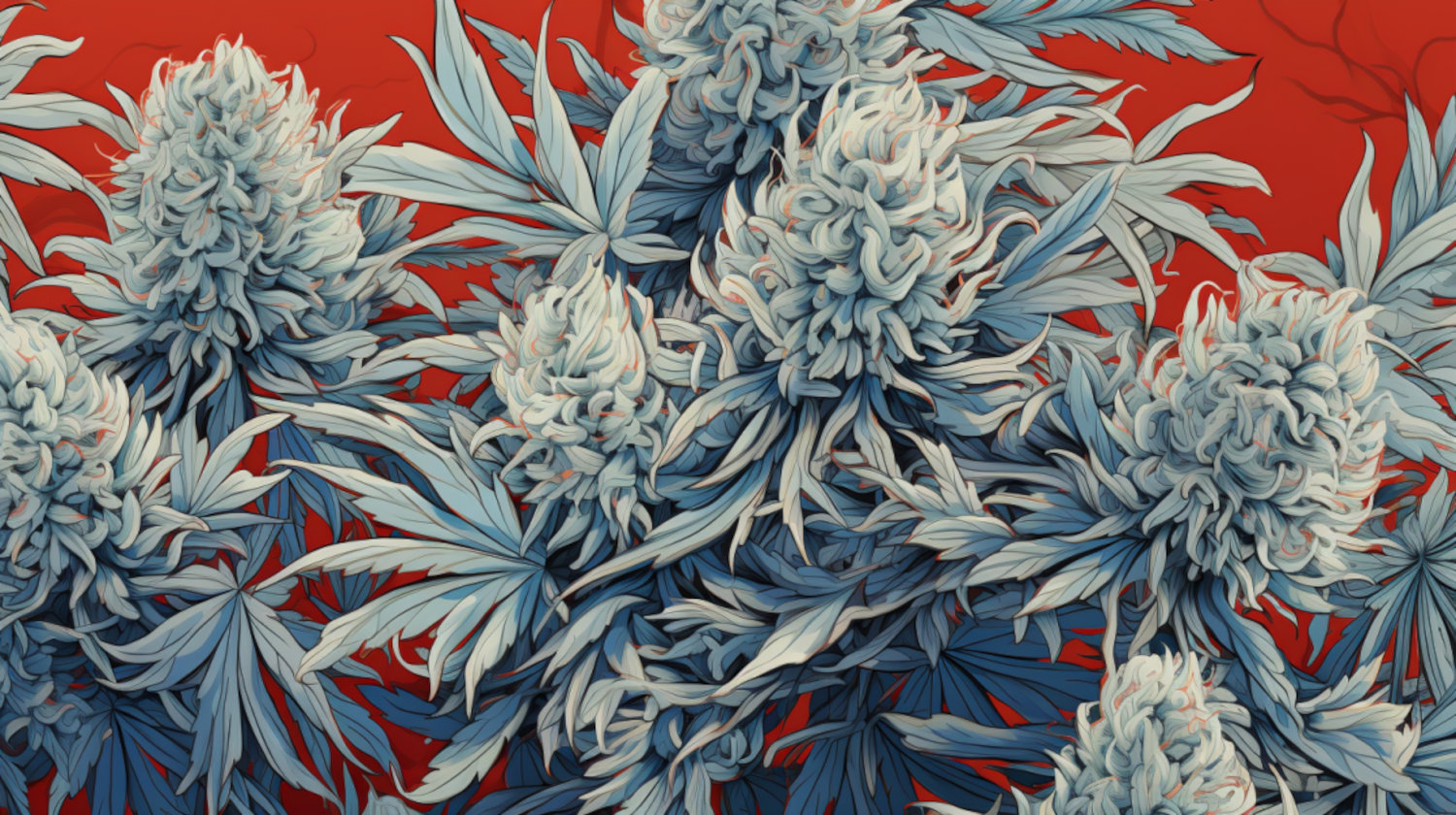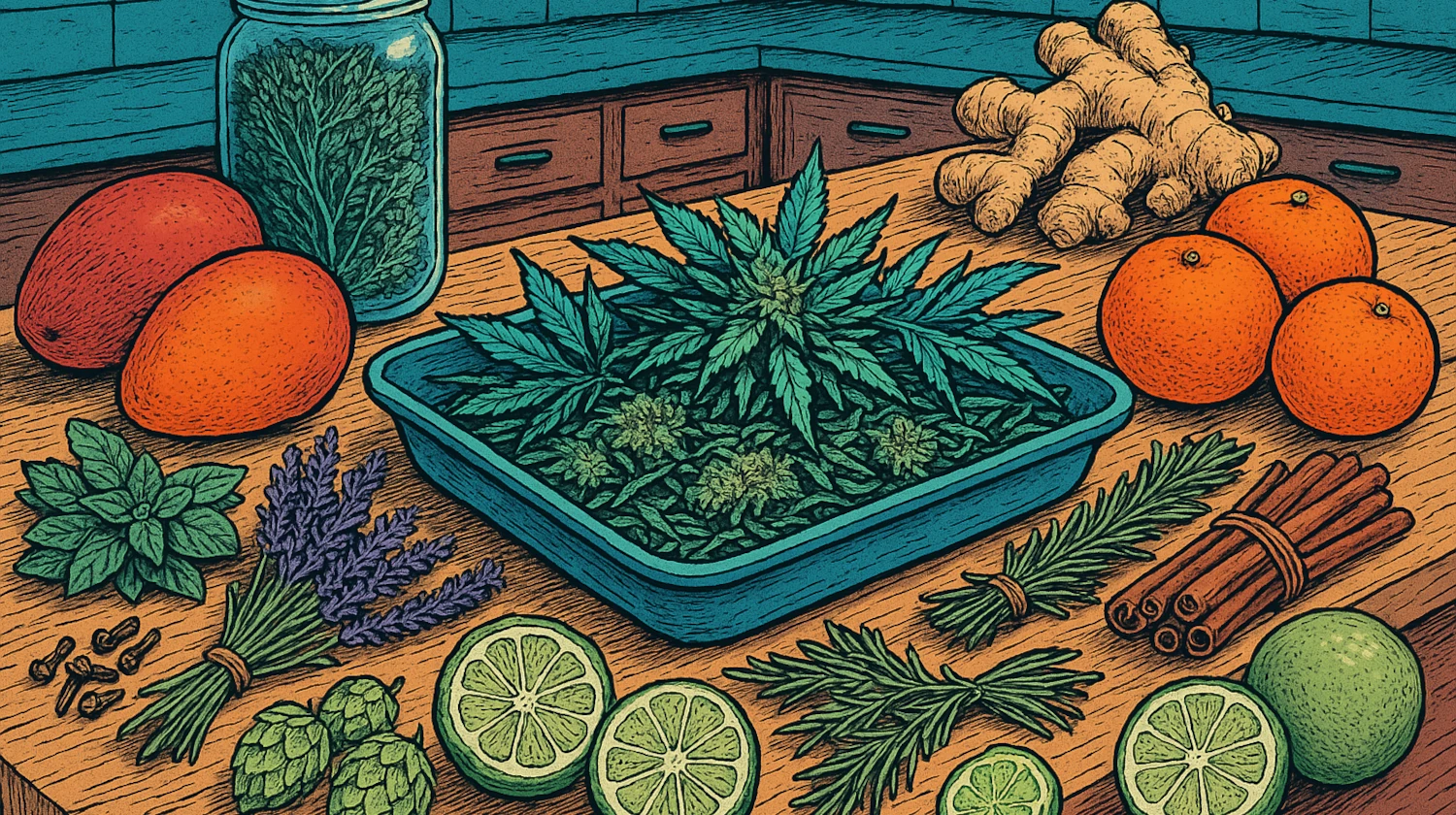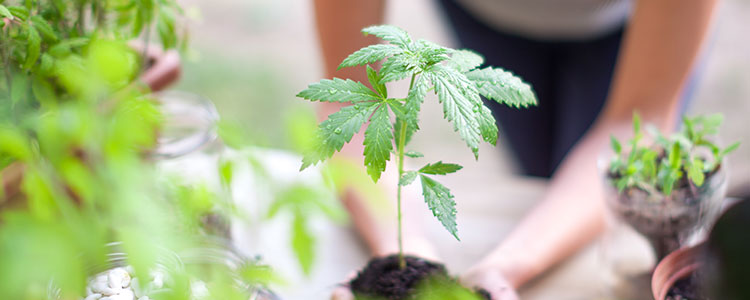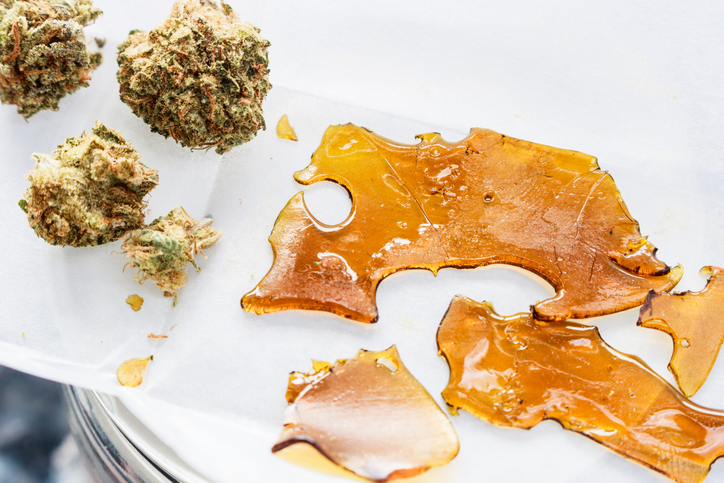In This Article
- What Are Trichomes?
- Types of Trichomes Found on Cannabis
- Why Does Cannabis Have Trichomes?
- Functions of Trichomes on Cannabis
- Do More Trichomes Mean Better Weed?
- Where Are Trichomes Most Prevalent on a Weed Nug?
- Cannabis Trichomes vs. Pistils
- Trichomes and Harvesting Cannabis
- What color should the trichomes be at harvest?
- Trichomes and Cannabis Concentrates
- References
Key Takeaways
- Trichomes are tiny glands on cannabis plants that produce cannabinoids and terpenes.
- Trichomes protect the plant and create strains’ unique effects, smells, and tastes.
- A trichome’s color helps growers know the best time to harvest for desired potency.
The frosty, crystal-like coating on weed buds isn’t just for looks. These tiny compounds are called trichomes, and they play a big part in a cannabis session.
Trichomes on weed impact the consumption experience, no matter the intent. They are the essential elements that give cannabis strains their unique effects, smells, and flavors. For patients, understanding trichomes and their impact on the plant can help them know if their flower is fresh and when to harvest homegrown cannabis.
What Are Trichomes?
Trichomes are tiny hairs or small mushroom-shaped outgrowths found on many plants, including but not limited to cannabis. In cannabis, they're often called "resin glands" because of the stickiness they possess.
Types of Trichomes Found on Cannabis
Three types of cannabis trichomes have been identified.1
- Bulbous Trichomes: The smallest and most difficult to see without a microscope. They have only a few cells and are found all over the plant.
- Capitate Sessile Trichomes: Slightly larger, these sit flat on the plant's surface and have a small head that makes the critical plant compounds, AKA cannabinoids and terpenes.2
- Capitate Stalked Trichomes: The most important for potency, these tiny compounds resemble mushrooms with a round head and a stalk. They make most of the THC, CBD, and terpenes in cannabis.
Why Does Cannabis Have Trichomes?
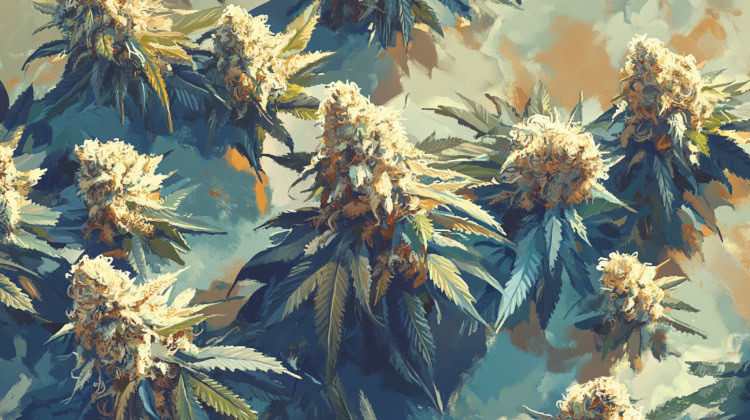
Trichomes aren't just for the consumer. They help the plant survive, serving as its natural defense system. Be it cannabis or another plant, trichomes provide plants with:
- Pest Protection: The sticky, bitter compounds keep bugs away while trapping small insects.3
- UV Shield: Trichomes act like sunscreen, protecting the plant from harmful UV light while regulating the plant’s temperature.4
- Environment Defense: These tiny compounds help plants hold water in dry areas.5
- Animal Deterrent: The aromas and effects of cannabinoids and terpenes can keep animals from eating the plant.
- Other Protection: Trichomes have been known to also protect plants from strong winds and fungi.
Functions of Trichomes on Cannabis
In cannabis, the main function of a trichome is to produce various important compounds.
- Cannabinoids: THC (which causes the intoxicating "high"), CBD (studied for possible therapeutic effects), and more. These work with our body's system in several ways.
- Terpenes: These aromatic molecules contribute to a strain’s aroma, flavor, and effects.
- Flavonoids: These lesser-discussed compounds give strains their color.
These compounds are made and stored in the trichomes. Therefore, the healthier the trichomes a plant has, the more potent and flavorful it is likely to be.
Do More Trichomes Mean Better Weed?
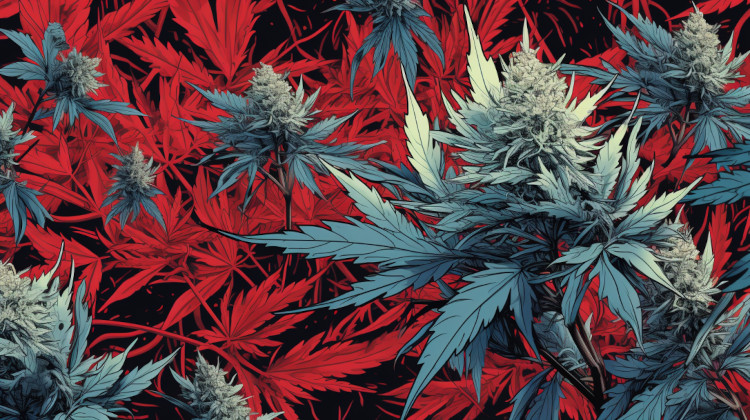
Generally, yes. A higher number of healthy trichomes indicates a greater concentration of cannabinoids and terpenes. Which usually leads to stronger effects and better flavor. However, the quality and freshness of the trichomes are just as important as the quantity.
Where Are Trichomes Most Prevalent on a Weed Nug?
Trichomes are found all over the plant. That said, the most potent capitate stalked trichomes are primarily found on the parts of the cannabis flower that comprise the bud. Conversely, in most cases, fewer trichomes can be found on larger fan leaves and stems.
Cannabis Trichomes vs. Pistils
The cannabis plant has several components. Therefore, it can be easy to mix up essential parts, such as trichomes and pistils. When differentiating between the two, remember the following:
- Pistils: These are the hair-like parts of the female cannabis plant. They’re usually white or light yellow before turning orange, red, or brown as the plant grows. They are for catching pollen to reproduce, not making cannabinoids.
- Trichomes: These are the tiny, often shiny, resin glands and are much smaller than pistils. Rather than help with reproduction, trichomes produce much of the plant’s effects and core compounds.
For a simpler overview: Think of pistils as the visible hairs and trichomes as the tiny, frosty crystals that make the bud look sparkling.
Trichomes and Harvesting Cannabis
The color of trichomes on weed is the best way to know when to harvest, and it occurs in three stages.6 Harvesting at the right time gets you the most potent product. Growers often use a magnifying glass to examine them.
- Clear Trichomes: These are young and have not yet developed full cannabinoid content. Harvesting now may yield a weaker, yet more energetic effect.
- Cloudy/Milky Trichomes: When trichomes turn milky white, it indicates that THC production is at its peak. Many growers harvest when most trichomes are milky (50-70%) for a strong, balanced effect. While opinions will always vary, many feel that milky trichomes are ideal for potency.
- Amber Trichomes: As they get older, trichomes turn amber. This means THC is changing into CBN, which might cause more relaxing or sedating effects than expected.
In addition to color, a trichome’s head shape and stalk length will change as it matures.7
What color should the trichomes be at harvest?
It depends on the effect the consumer and/or cultivator wants. For energy, the trichomes should be mostly milky with some clear. For balance, a mix of milky and amber. For relaxation, more amber.
Trichomes and Cannabis Concentrates
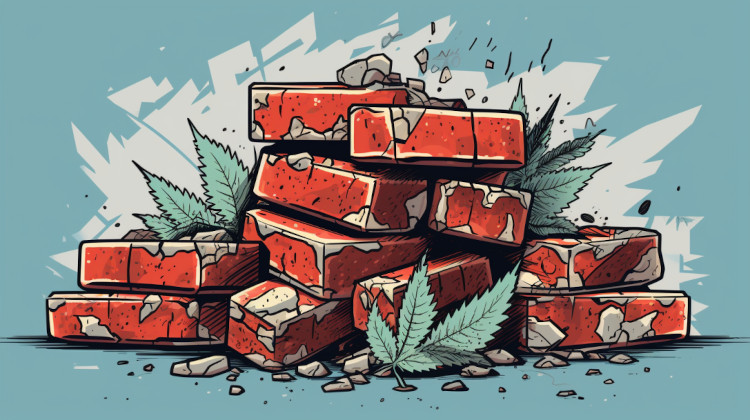
Trichomes are the main ingredient in almost all cannabis concentrates. Products like kief, hash, rosin, and oils are all made from these concentrated resins.8
- Kief: This powdery extract is made when dried trichome heads fall off the flower, often against a mesh screen.9 It can be collected from a weed grinder, rolling tray, or any surface where cannabis ages or is broken apart.
- Hash: Kief can be pressed and heated to make hash, a stronger concentrate that can be consumed on its own, or combined with cannabis flower to be smoked.
- Rosin: This solventless extract is made by using heat and pressure on cannabis flower or kief to squeeze out the golden, highly potent resin for dabs, vaping, and edibles.
- Solvent-Based Concentrates: Concentrates, such as shatter, wax, and oils, are made by using chemicals (solvents) that extract cannabinoids and terpenes from trichomes. The solvent is then removed, leaving a very strong product while also stripping away the strain’s flavor and aroma.
References
- Huchelmann A, Boutry M, Hachez C. Plant Glandular Trichomes: Natural Cell Factories of High Biotechnological Interest. Plant Physiology. 2017;175(1):6-22. doi:https://doi.org/10.1104/pp.17.00727 ↩︎
- Sommano SR, Chittasupho C, Ruksiriwanich W, Jantrawut P. The Cannabis Terpenes. Molecules. 2020;25(24):5792. Published 2020 Dec 8. doi:10.3390/molecules25245792 ↩︎
- Karabourniotis G, Liakopoulos G, Nikolopoulos D, Bresta P. Protective and defensive roles of non-glandular trichomes against multiple stresses: structure–function coordination. Journal of Forestry Research. 2019;31(1):1-12. doi:https://doi.org/10.1007/s11676-019-01034-4 ↩︎
- Tanney CAS, Backer R, Geitmann A, Smith DL. Cannabis Glandular Trichomes: A Cellular Metabolite Factory. Front Plant Sci. 2021;12:721986. Published 2021 Sep 20. doi:10.3389/fpls.2021.721986 ↩︎
- Wang X, Shen C, Meng PH, Tan GF, Litang Lv. Analysis and review of trichomes in plants. BMC Plant Biology. 2021;21(1). doi:https://doi.org/10.1186/s12870-021-02840-x ↩︎
- Crispim Massuela D, Hartung J, Munz S, Erpenbach F, Graeff-Hönninger S. Impact of Harvest Time and Pruning Technique on Total CBD Concentration and Yield of Medicinal Cannabis. Plants. 2022; 11(1):140. https://doi.org/10.3390/plants11010140Crispim Massuela, Danilo, et al. “Impact of Harvest Time and Pruning Technique on Total CBD Concentration and Yield of Medicinal Cannabis.” Plants, vol. 11, no. 1, 5 Jan. 2022, p. 140, https://doi.org/10.3390/plants11010140. ↩︎
- Punja ZK, Sutton D, Kim T. Glandular trichome development, morphology, and maturation are influenced by plant age and genotype in high THC-containing cannabis (Cannabis sativa L.) inflorescences. Journal of cannabis research. 2023;5(1). doi:https://doi.org/10.1186/s42238-023-00178-9 ↩︎
- Valizadehderakhshan M, Shahbazi A, Kazem-Rostami M, Todd MS, Bhowmik A, Wang L. Extraction of Cannabinoids from Cannabis sativa L. (Hemp)—Review. Agriculture. 2021; 11(5):384. https://doi.org/10.3390/agriculture11050384 ↩︎
- Lazarjani MP, Young OA, Kebede L, Seyfoddin A. Processing and extraction methods of medicinal cannabis: a narrative review. Journal of cannabis research. 2021;3(1). doi:https://doi.org/10.1186/s42238-021-00087-9 ↩︎
The information in this article and any included images or charts are for educational purposes only. This information is neither a substitute for, nor does it replace, professional legal advice or medical advice, diagnosis, or treatment. If you have any concerns or questions about laws, regulations, or your health, you should always consult with an attorney, physician or other licensed professional.

